

The Subtle Art of Downsizing
HOW I LEARNED TO STOP WORRYING AND LOVE RIGHTSIZING


Table of Contents
INTRODUCTION
KEY STRATEGIES FOR EFFECTIVE RIGHTSIZING
PLANNED VS. UNPLANNED RIGHTSIZING
CAREFUL SELECTION OF HELP
LIFESTYLE RIGHTSIZING
BREAKING DOWN THE PROCESS
PSYCOLOGICAL CONSIDERATION
FOCUSING ON GAINS RATHER THAN LOSSES
EMBRACING MINIMALISM
STEPS TO DOWNSIZING
PLANNING YOUR DOWNSIZING PROCESS
ASSESSING YOUR BELONGINGS
SORTING AND DECLUTTERING
SEEKING ASSISTANCE
MANAGING EMOTIONAL ATTACHMENTS
FINALIZING YOUR NEW SPACE
EMBRACING THE TRANSITION
PSYCHOLOGICAL IMPACT
POSITIVE EMOTIONS
EMOTIONAL CHALLENGES
COPING MECHANISMS
RELATIONAL BENEFITS
KEY MISTAKES TO AVOID
AVOID UNHELPFUL ADVISE
DOING EVERYTHING AT ONCE
FOCUSING ON LOSS
RIGHTSIZING IS A PLANNED PROCESS
Embracing ‘Rightsizing’
A CONSCIOUS APPROACH TO REDUCING LIVING SPACE
RIGHTSIZING is my preferred description for one’s reducing the volume of their living space.
“Down” and “downsizing” frequently imply a reduction or loss of something valuable. Moving “down” has connotations of loss of social standing, prestige, or career advancement opportunities. Downsizing may also be viewed as an unwelcome or involuntary change, rather than a positive choice. There’s no ambivalence about your Rightsizing.
IT’S THE RIGHT MOVE AT THE RIGHT TIME FOR ALL THE RIGHT REASONS.


A Shift to Simplicity and Fulfillment
Rightsizing is a contemporary approach emphasizing the deliberate reduction of possessions and responsibilities to foster a more meaningful, streamlined lifestyle. Rightsizing involves transitioning from larger to smaller homes in response to financial opportunities, changing family dynamics, or a desire for simplicity.
Successful transitions often involve planned approaches, careful selection of assistance, and methodical sorting of belongings. By embracing this practice, individuals can address the emotional hurdles while cultivating a lifestyle emphasizing simplicity and fulfillment.
As a senior citizen, I can personally relate to the needs and concerns of those looking to rightsize. With my considerable experience I fully understand the many challenges that come with transitioning to a smaller home. My goal when assisting you is to make this significant life transition as smooth and stress-free as possible.
I offer a comprehensive suite of resources and my devoted support, ensuring that every step of the process is handled with expertise and care.
Key Strategies for Effective Rightsizing
Planned vs. Unplanned Rightsizing
Ideally, Rightsizing should be a well-planned process. However, unforeseen circumstances may necessitate immediate action, potentially leading to rushed and ill-considered decisions. Therefore, starting the Rightsizing process early is crucial, allowing for a more thoughtful evaluation of assets and resources to retain or eliminate.
Careful Selection of Help
Accepting assistance from friends, family, or consultants can be beneficial, but it’s essential to ensure that this help aligns with your specific Rightsizing goals. While well-meaning advice may be plentiful, it’s crucial to discern which contributions genuinely advance the Rightsizing objectives.
Lifestyle Rightsizing
In a personal context, Rightsizing often occurs during retirement or as a lifestyle choice aimed at simplifying living arrangements and reducing expenses. Seniors frequently Rightsize to smaller homes or retirement communities, seeking to alleviate financial burdens and enhance their quality of life. However, this process can be complicated, with common pitfalls including lack of a master plan, and the careless disposition of belongings.

Breaking Down the Process
Attempting to Rightsize everything at once can be overwhelming. Instead, breaking the process into manageable tasks—focusing on one room or area at a time—can ease stress and facilitate a thorough assessment of what is truly necessary to retain.

Psychological Considerations
Focusing on Gains Rather Than Losses
One of the more challenging aspects of Rightsizing is shifting the focus from what is being given up to the benefits of simplifying one’s life.
Rightsizing can offer reduced maintenance responsibilities, financial savings, and an overall enhanced quality of life by prioritizing what is essential.
Embracing Minimalism
Rightsizing is closely related to minimalism, which emphasizes the intentional reduction of possessions and distractions. This philosophy encourages individuals to create space for what genuinely matters, leading to increased clarity, focus, and a sense of freedom from excess.

Steps to Rightsizing
Planning Your Rightsizing Process
The first step in Rightsizing is to create a wellcrafted plan. This plan should outline your specific goals, target areas for reduction, and a timeline for implementation. Setting clear and measurable objectives helps guide the process and aligns it with your broader lifestyle aspirations. It’s essential to start early, as rushing through decisions can lead to regrets over discarded items or poorly considered choices.
Assessing Your Belongings
A critical part of Rightsizing involves evaluating your possessions to differentiate between needs and wants. This may require a systematic approach, such as taking notes on what you use daily to identify items that truly add value to your life. You can employ methods like the KonMari Method, which encourages individuals to keep only items that “spark joy”. This reflective practice can help mitigate the emotional stress often associated with parting with belongings.
Sorting and
Decluttering
Once you have assessed your belongings, the next step is sorting and decluttering. Begin by categorizing items into groups such as keep, sell, donate, or discard. This process helps streamline decision-making and prevents the hasty disposal of valuable or sentimental items. Aim to strike a balance between practicality and emotional attachment when deciding what to keep.
Seeking Assistance
Don’t hesitate to accept help during the Rightsizing process. Whether it involves enlisting family, friends, or professional organizers, having support can make the task less overwhelming. A strategic approach to Rightsizing not only enhances your living situation but can also lead to a more fulfilling lifestyle.

Managing Emotional Attachments
One of the challenges of Rightsizing is dealing with emotional attachments to possessions. It’s important to approach this aspect with sensitivity and care. Take time to reflect on the significance of each item and consider keeping a few meaningful pieces that resonate with your past while letting go of the rest.
Finalizing Your New Space
After sorting through your belongings, the next step is to focus on the new living environment. Consider the functional needs of your space and how you will organize the items you choose to keep. A systematic approach to arranging your possessions can contribute to an orderly and functional living space, making the transition easier and more enjoyable.
Embracing the Transition
Finally, embrace the journey of Rightsizing. View the process not merely as a reduction of possessions but as an opportunity for a more streamlined and fulfilling life. A successful Rightsizing experience can lead to increased autonomy, competence, and relatedness, ultimately enhancing life’s satisfaction.
Psychological Impact

Rightsizing can lead to a myriad of psychological effects, both positive and negative, as individuals navigate the complexities of reducing their living space and material possessions.
Positive Emotions
Many individuals who transition to a minimalist lifestyle report an increase in positive emotions. This transformation is often attributed to a combination of autonomy, competence, mental space, and heightened awareness. Participants in studies have expressed feelings of joy, peacefulness, and an overall sense of well-being after adopting minimalism. This lifestyle shift allows them to escape the stress and anxiety commonly associated with consumer-driven societies, acting as a catalyst for these positive emotional states.
Emotional Challenges
Conversely, the process of Rightsizing can also trigger emotional distress. Letting go of items imbued with sentimental value can be particularly challenging. Certain items may carry significant emotional weight, evoking memories that can overwhelm individuals during this transitional phase. The fear of making wrong decisions about what to keep or discard can create substantial stress, as many worry about regretting their choices in the future. This emotional turbulence is not uncommon, especially as individuals confront unresolved conflicts from their past that may resurface during the Rightsizing process.

Relational Benefits
Interestingly, Rightsizing can enhance interpersonal relationships. The closer living conditions associated with smaller homes necessitate improved communication and conflict resolution skills. Many individuals report that these interactions lead to stronger bonds and a deeper understanding of each other’s needs and desires, thereby enriching their relationships and contributing to overall personal satisfaction.
Coping Mechanisms
To manage these psychological challenges, experts recommend several coping strategies. Recognizing and articulating one’s feelings is crucial, whether through conversations with friends or counseling. Additionally, focusing on the potential gains from Rightsizing, such as improved living conditions or increased leisure time, can help individuals shift their perspective from loss to opportunity.

Benefits of Personal Downsizing
The benefits of personal Rightsizing are significant. By reducing physical possessions, individuals can achieve greater clarity and focus, declutter their minds, and alleviate financial strain.
Additionally, the process fosters a deeper self-awareness as individuals reflect on what truly adds value to their lives. This mindful approach to decluttering allows for a more intentional living experience, ultimately leading to enhanced life satisfaction and opportunities for meaningful connections.
Key Mistakes to Avoid
1.
Avoid Unhelpful
Advise
While assistance from friends and family is invaluable, it must align with your Rightsizing objectives. Accept help that genuinely advances your efforts and be wary of well meaning but ultimately unhelpful advice that could derail your progress.
Doing Everything at Once 2.
Ideally, Rightsizing should be a well-planned process. However, unforeseen circumstances may necessitate immediate action, potentially leading to rushed and ill-considered decisions. Therefore, starting the Rightsizing process early is crucial, allowing for a more thoughtful evaluation of assets and resources to retain or eliminate.
3. Focusing on Loss
Focusing solely on what you’re giving up can overshadow the benefits of Rightsizing. Whether it’s for reduced maintenance, financial savings, or a simplified lifestyle, Rightsizing offers significant gains. It’s crucial to view the process as an opportunity to enhance your quality of life by prioritizing what’s truly important.

the Rightsizing process can complicate matters, leading to rushed decisions under pressure. Starting early is among the crucial steps to Rightsize effectively, allowing you ample time to sort through your belongings and make thoughtful decisions on what to keep, sell, or donate.
In many cases, though, unforeseen life events can dictate when you need to Rightsize. Delaying
Rapidly discarding items can lead to regret. Rightsizing is not just about reducing clutter but about identifying what really adds value to your life. It’s essential to strike a balance, carefully considering the sentimental and practical worth of your possessions before letting them go.
Conclusion
Rightsizing is increasingly becoming a strategic choice for many, particularly for seniors looking to simplify their lifestyle, reduce living costs, and better manage their living spaces in retirement. However, the process is fraught with potential pitfalls that can complicate what should otherwise be a liberating transition.
When done correctly, Rightsizng can significantly improve your living situation, particularly in later life. By avoiding these common Rightsizing mistakes and adopting a strategic approach to how to Rightsize, you can ensure the process is rewarding and conducive to a simpler, more fulfilling lifestyle. Remember, the essence of Rightsizing is not in the loss but in the newfound freedom and opportunities it presents.
Plan carefully, stay positive and embrace the journey to a streamlined life.
It’s the Right move, at the Right time for all the Right reasons .

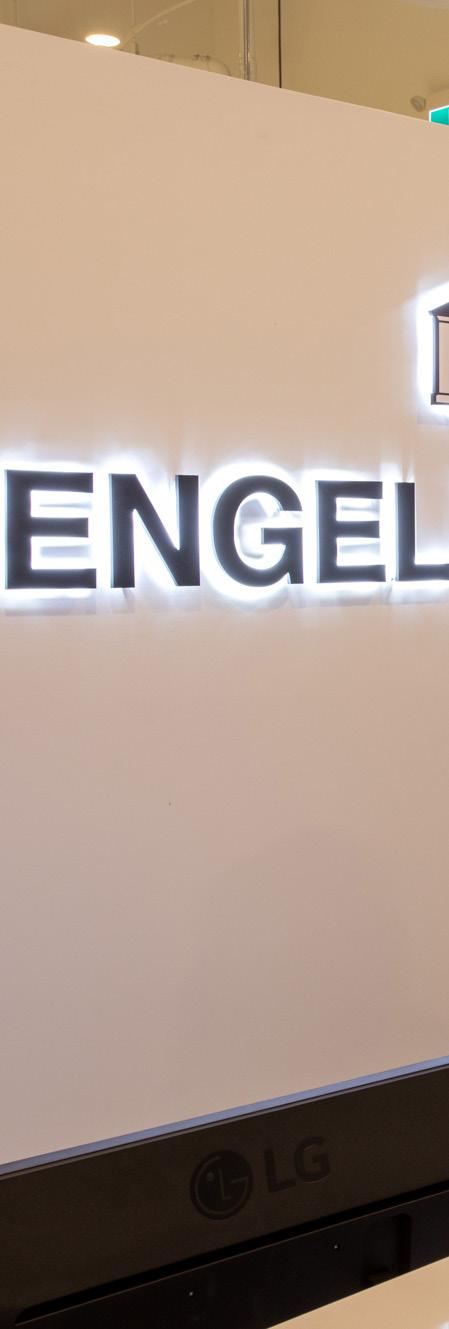


The Ultimate Guide to Decluttering


Introduction
Decluttering a home can be an overwhelming task, but with the right approach, it can transform your living space and improve your quality of life. This guide explores effective room-by-room decluttering methods, focusing on strategies that work well for beginners. I’ll compare popular approaches like the Peter Walsh method, which starts by emptying entire rooms, and the Becker method, which begins with easier spaces to build momentum. Whether you prefer a structured, all-at-once change or a more gradual process, you’ll find techniques to help you create a clutterfree home tailored to your needs and lifestyle.
Clutter has a significant impact on mental health, affecting stress levels, focus, and overall well-being. Research shows that cluttered environments increase cortisol levels, the body’s stress hormone. I aspire to reduce your stress level by assisting you with the logistics of the decluttering and the moving process—from planning to execution, a tailored decluttering strategy based on your individual needs, ensuring that you only move what is necessary.



The Psychology of Clutter
Clutter can have a significant influence on our mental well-being, but understanding its effects can inspire positive change! Research shows that decluttering can lead to lower cortisol levels (the body’s stress hormone), helping to reduce stress. A tidy space can make us feel more in control and resilient, supporting both mental clarity and physical health.
The benefits of a clutter-free environment include:
• Improved focus and productivity with fewer visual distractions
• Increased feelings of confidence, accomplishment, and self-worth
• Lower risk of depression and anxiety
• Enhanced decision-making and reduced procrastination
• Stronger relationships and a greater sense of social connection
Recognizing these benefits can motivate us to create organized spaces that promote a sense of calm, clarity, and well-being!
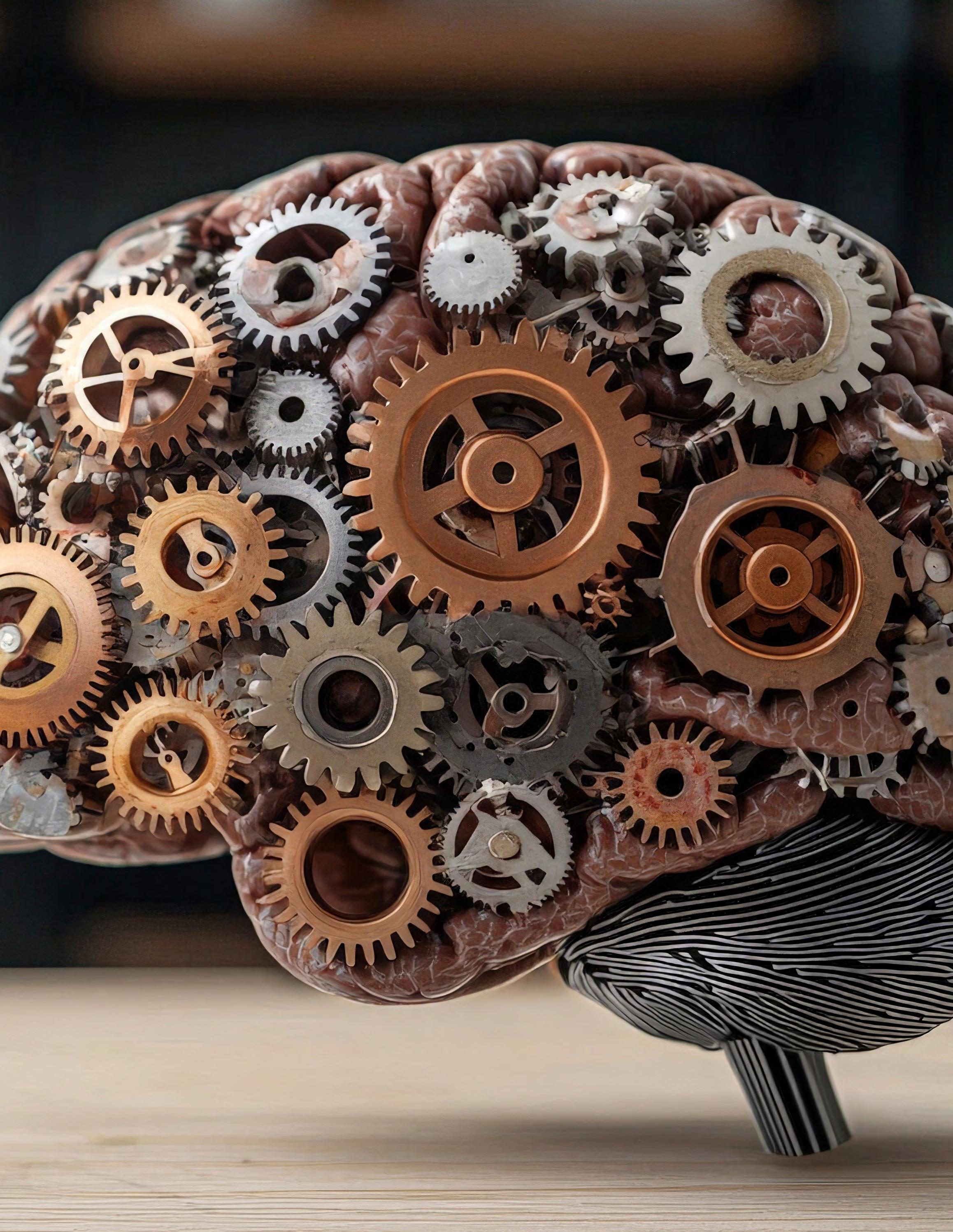
Eleven Unique Decluttering Methods
The FlyLady Method
Developed by Marla Cilley in 1999, is a structured approach to decluttering and cleaning that emphasizes manageable tasks and routines. The core philosophy is to break down cleaning into small, achievable increments, primarily focusing on 15-minute sessions. This method aims to reduce the overwhelm often associated with deep cleaning by making it more approachable and less stressful.
KEY COMPONENTS OF THE FLYLADY METHOD
Zone Cleaning:
The home is divided into five zones, with a specific zone focused on each week of the month. Each day involves dedicating 15 minutes to declutter and clean that zone.
The zones are:
• Zone 1: Entrance, front porch, and dining room
• Zone 2: Kitchen
• Zone 3: Main bathroom and one additional room
• Zone 4: Master bedroom, bathroom, and closet
• Zone 5: Living room.
Declutering Techniques:
• 15-Minute Declutter Sessions: Set a timer for 15 minutes to focus on decluttering any area.
• 27-Fling Boogie: Quickly gather 27 items to throw away or donate, promoting a sense of accomplishment
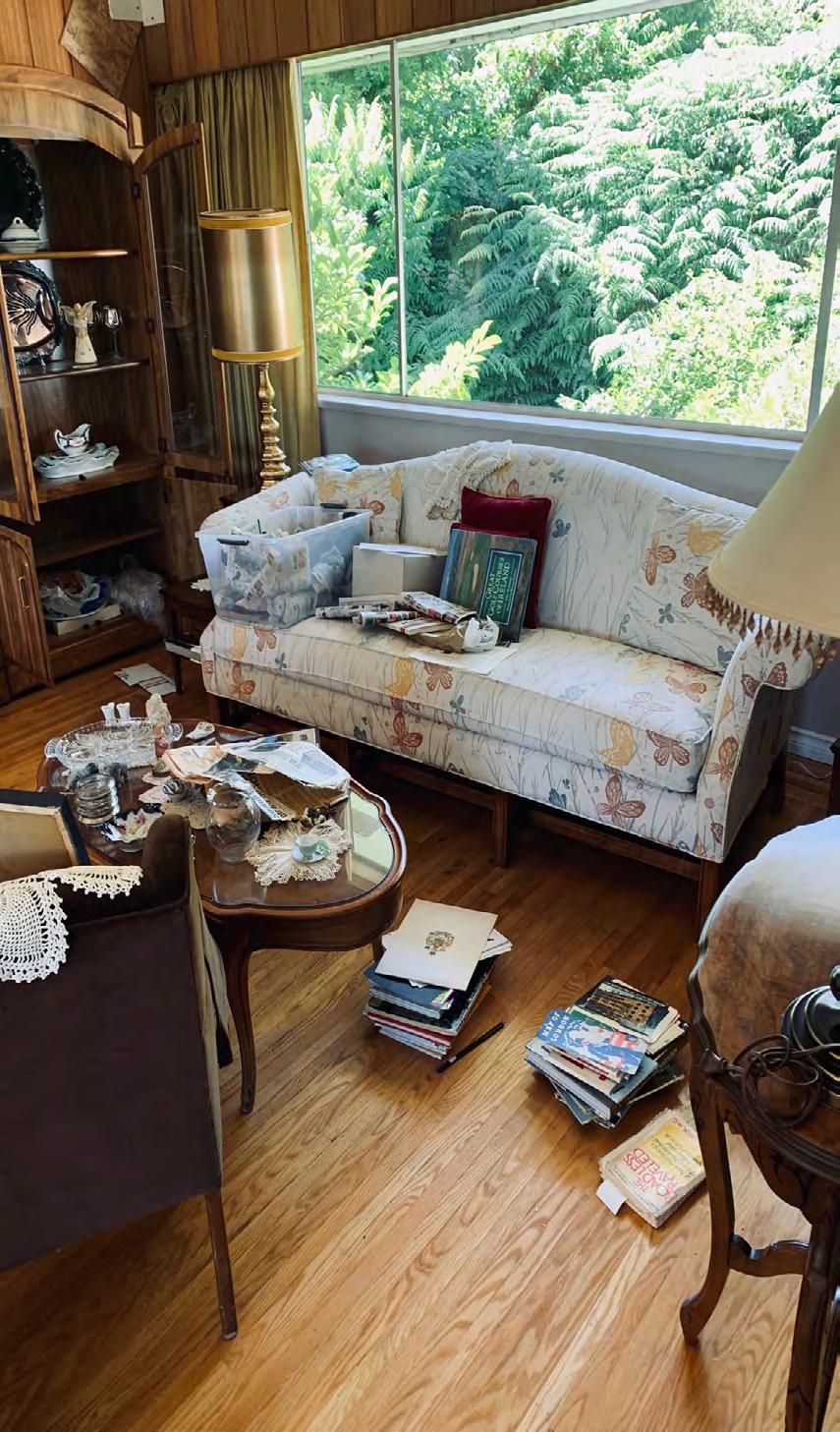
• Hot Spot Fire Drill: Identify clutter-prone areas (hot spots) and spend five minutes clearing them to prevent them from becoming overwhelming.
• Baby Steps: Newcomers are encouraged to start with simple tasks, such as shining their sink, which serves as a foundational habit that can lead to further cleaning successes.
• The FlyLady Method has gained popularity due to its community support, including daily emails with missions and reminders that help users stay motivated and organized in their cleaning efforts.
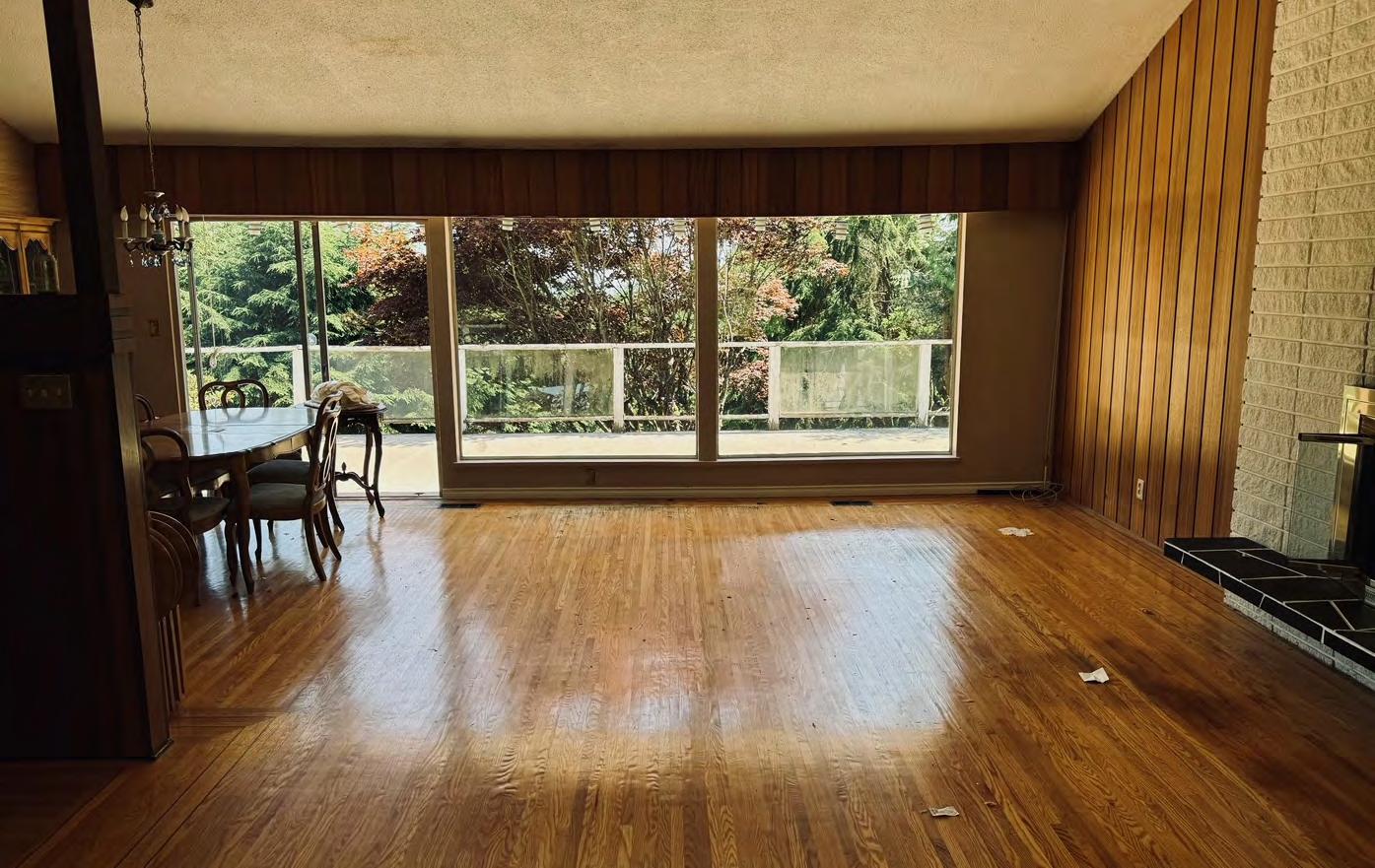
The 12-12-12 Decluttering Method
The 12-12-12 decluttering method is a straightforward strategy designed to simplify the process of organizing and reducing clutter in your living space. Developed by Joshua Becker, it involves three key actions:
Throw Away 12 Items: Identify and dispose of 12 items that are no longer needed or usable.
Donate 12 Items: Select 12 items that can be given to others, promoting generosity and sustainability.
Return 12 Items to Their Proper Place: Organize and return 12 items that are out of place back to their designated spots.
This method encourages individuals to tackle decluttering in manageable segments, making it less overwhelming and more achievable. It promotes mindfulness regarding possessions, helping people assess what they truly value and need in their lives.
The simplicity of the 12-12-12 rule makes it adaptable for various spaces and personal circumstances. If the standard of 36 items feels daunting, individuals can adjust the numbers to suit their comfort levels, starting with fewer items if necessary.
The Zen Habits Method of Decluttering
The Zen Habits Method of decluttering, developed by Leo Babauta, emphasizes mindfulness and simplicity as key principles in the decluttering process. This method encourages individuals to let go of physical and mental clutter to foster a more peaceful and present life.
MINDFULNESS IN ACTION
Decluttering is viewed as a form of meditation, where each action—whether it’s cleaning or organizing—is performed with full attention and presence. This practice allows individuals to engage deeply with their surroundings and emotions, promoting awareness of attachments and fears associated with clutter.
START SMALL
Babauta advocates beginning with small, manageable areas rather than tackling overwhelming spaces all at once. This could involve clearing a single shelf or countertop, which helps to build momentum without causing stress.
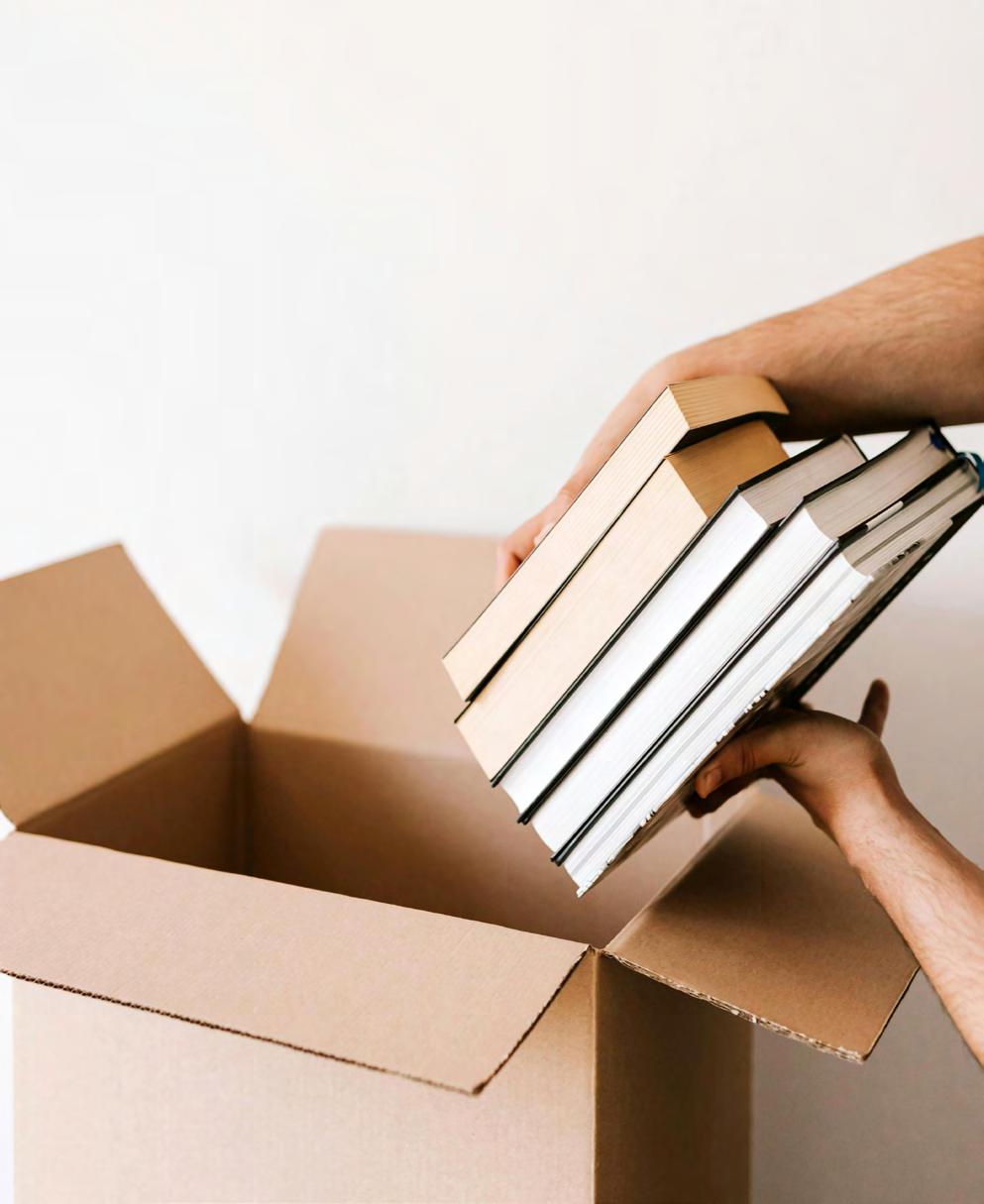
DECISION-MAKING
The method emphasizes making quick decisions about each item—whether to keep, donate, or discard—without second-guessing. This approach helps to reduce procrastination and encourages a more decisive mindset.
LEAVE NO TRACE
Inspired by Zen teachings, the idea is to clean up after completing tasks to prevent clutter from accumulating. This habit fosters a sense of responsibility for one’s space and promotes a clearer mind.
CREATE HOMES FOR ITEMS
Each object should have a designated place, making it easier to maintain order and clarity in one’s environment. If an item doesn’t have a home, it may indicate that it’s unnecessary.
EMBRACE THE PROCESS
Decluttering should be seen as a liberating practice rather than a chore. Babauta encourages individuals to enjoy the act of decluttering, focusing on gratitude for what they have while letting go of what no longer serves them.
REGULAR MAINTENANCE
Establishing routines for decluttering— such as dedicating time each week to tidy up—helps prevent clutter from becoming overwhelming again in the future.
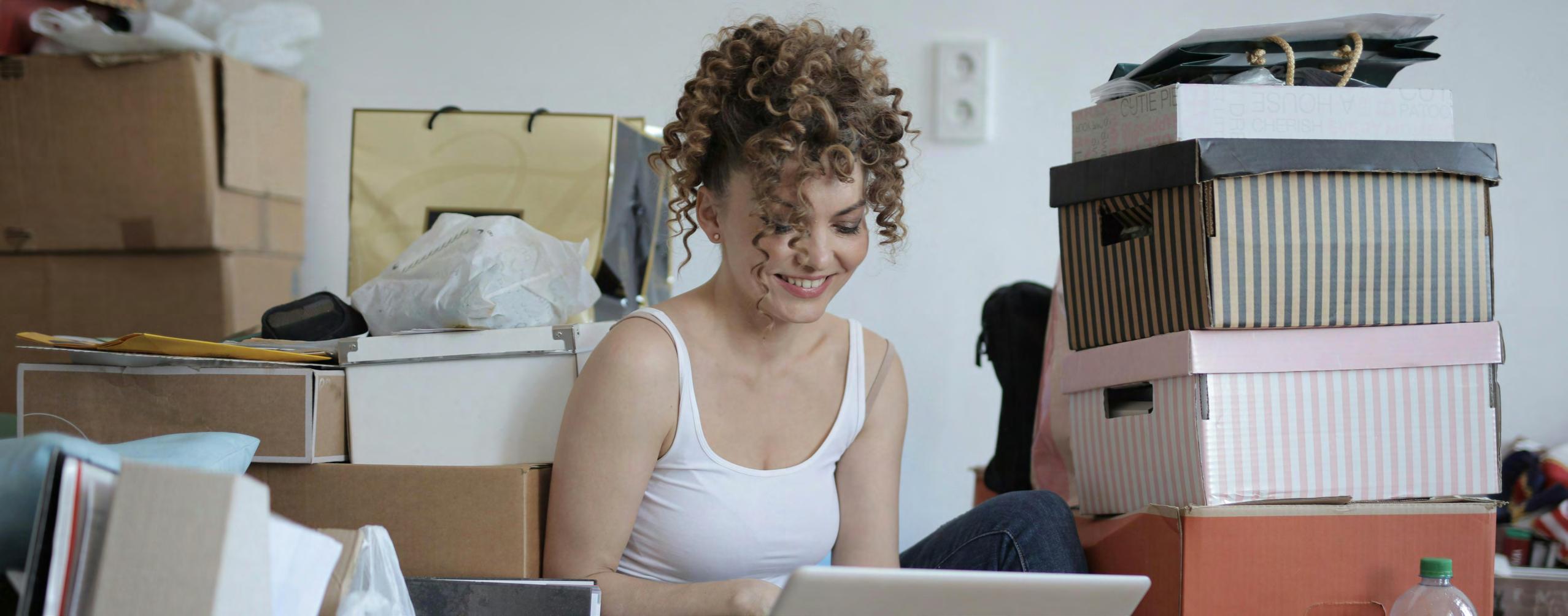
KonMari Method
The KonMari Method, developed by Marie Kondo, is a unique approach to decluttering that emphasizes a minimalist philosophy. Rather than organizing items room by room, it encourages individuals to tidy by category, focusing on what to keep rather than what to discard.
SPARK JOY
The central tenet is to evaluate each item based on whether it “sparks joy.” If an item does not elicit happiness, it should be thanked for its service and discarded.
CATEGORY OVER LOCATION
Tidy by category (e.g., clothes, books, papers, miscellaneous items, sentimental items) instead of by room. This allows for a more comprehensive view of one’s possessions and aids in decisionmaking
ORDER OF CATEGORIES
The method follows a specific order:
• Clothes
• Books
• Papers
• Komono (miscellaneous items)
• Sentimental items
COMMITMENT AND VISUALIZATION
Before starting, individuals are encouraged to commit to the process and visualize their ideal lifestyle, which serves as motivation throughout the decluttering journey.
MINDSET SHIFT
The method promotes a mindset change regarding possessions and clutter. It encourages individuals to reflect on their relationship with their belongings and fosters a more intentional approach to acquiring new items in the future.
By following these principles, the KonMari Method aims not only to create a tidy living space but also to instill a lasting sense of order and joy in one’s life.
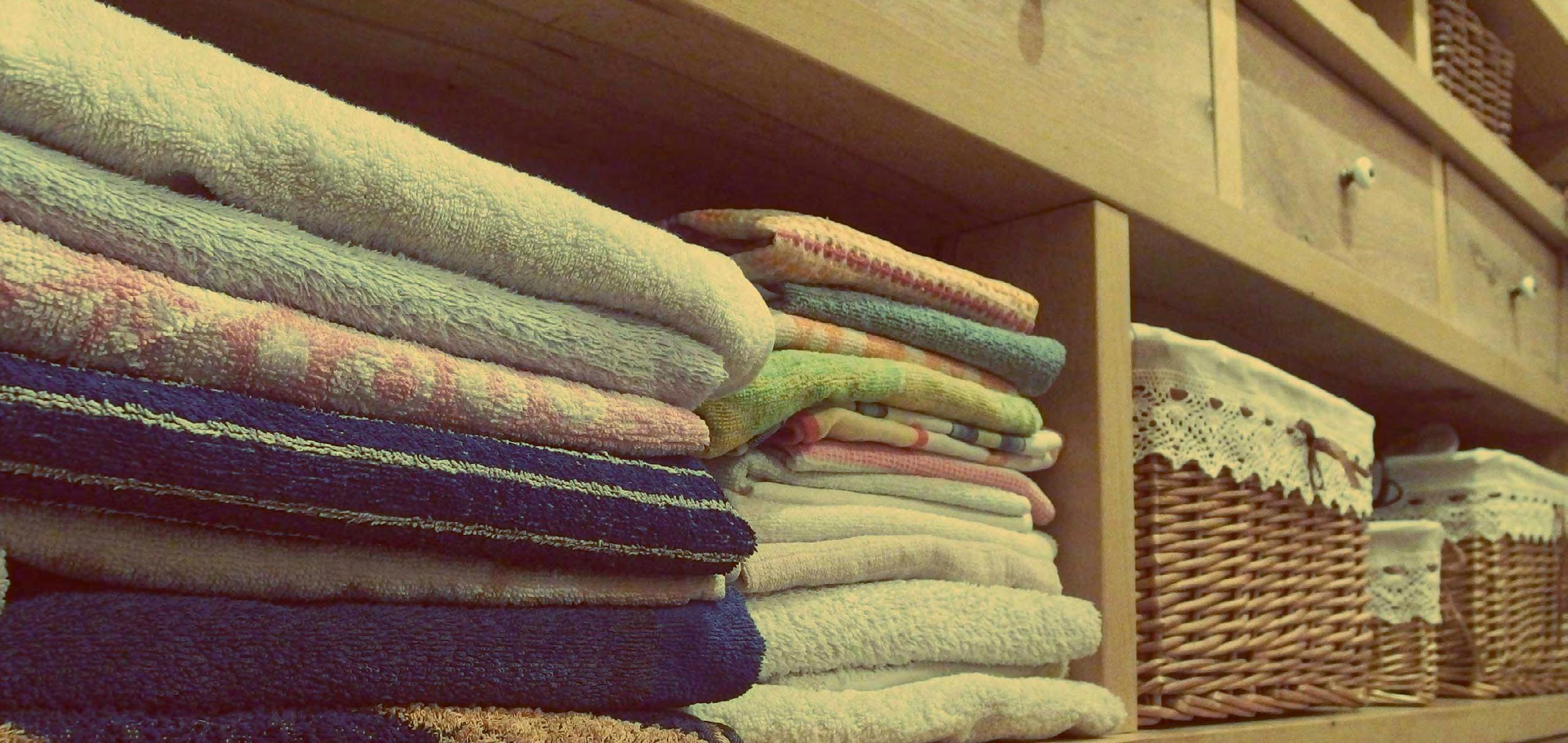
The Swedish Death Cleaning Method
Swedish Death Cleaning, or döstädning, is a decluttering philosophy rooted in Swedish culture that emphasizes simplifying one’s possessions to alleviate the burden on loved ones after one’s death. This method encourages individuals, particularly seniors, to thoughtfully assess and organize their belongings, ensuring that only meaningful items are retained.
PURPOSE
The primary goal is to ease the process for family and friends who would otherwise have to sort through a lifetime of accumulated items after a person’s passing. By decluttering proactively, individuals can make their lives more manageable and reduce stress for their loved ones.
PHILOSOPHY
Introduced by Margareta Magnusson in her book
The Gentle Art of Swedish Death Cleaning, this approach promotes the idea that one should keep only those items that add value or joy to life. Magnusson suggests asking oneself whether anyone would be happier if an item were saved, guiding the decision-making process about what to keep or discard.
Steps Involved
START SMALL
Begin with easier categories, such as clothing or small household items. This helps build momentum and confidence in the decluttering process.
CATEGORIZE ITEMS
Use a system to sort belongings into three main categories: Keep, Donate/Give Away, and Throw Away. This structured approach simplifies decision-making.
EMOTIONAL CONSIDERATION
Recognize that parting with sentimental items can be challenging. It’s acceptable to keep mementos that hold personal significance, but it’s also important to consider whether these items will be valued by others after one’s passing.
REGULAR MAINTENANCE
Swedish Death Cleaning is not just a one-time event but a continuous practice. Regularly reassessing possessions helps maintain a clutterfree environment throughout life.
DOCUMENTING MEMORIES
Consider documenting the stories behind significant items, which can provide comfort and connection for loved ones after you’re gone.

Benefits
REDUCED STRESS
A decluttered space is often linked to lower stress levels, as it creates a more organized and peaceful living environment.
LEGACY MANAGEMENT
Engaging in this practice allows individuals to reflect on their lives and how they wish to be remembered, fostering a sense of closure and intentionality.
ENHANCED QUALITY OF LIFE
By focusing on what truly matters, individuals can enjoy their possessions more fully and live with greater clarity and purpose
The Four Container Method
The Four-Box Method is a practical and efficient approach to decluttering your home by categorizing items into four distinct boxes. This method simplifies the decision-making process, making it easier to manage clutter without feeling overwhelmed.
KEEP
Items that you use regularly or hold sentimental value.
DONATE/SELL
Items that are in good condition but no longer serve you, suitable for donation or resale.
STORE
Items that are not needed daily but are worth keeping for future use or sentimental reasons.
TRASH
Broken, expired, or unusable items that should be disposed of responsibly.a clearer mind.
Steps Involved
GATHER YOUR BOXES
Collect four boxes or bins and label them according to the categories mentioned above.
WORK ROOM BY ROOM
Focus on one area at a time to avoid feeling overwhelmed.
SORT EACH ITEM
As you go through your belongings, place each item into one of the four boxes based on its category.
EMPTY THE BOXES
• Immediately dispose of items in the trash box.
• Take donations to a local charity or set them aside for a garage sale.
• Store items in their designated storage area.
• Put away items from the keep box in their proper locations.
Benefits

SIMPLICITY
The clear categories help streamline the decluttering process, allowing for quick decision-making.
EFFICIENCY
You can tackle one area at a time without feeling overwhelmed, making it easier to declutter in manageable steps.
CLUTTER REDUCTION
By systematically sorting through possessions, you can significantly reduce clutter and create a more organized living space.
The Tidy Toss Decluttering Method
The Tidy Toss Method encourages individuals to quickly sort through their belongings by tossing items into designated containers or baskets without the need for meticulous organization. This approach is designed to reduce the stress often associated with decluttering.
As you declutter a space, you make rapid decisions about what to keep and what to discard. The emphasis is on immediate action—items deemed unnecessary are either thrown away or set aside for donation, minimizing second-guessing and clutter accumulation.
This method is particularly effective in low-pressure areas like closets or storage spaces where perfection isn’t required. It allows for a more relaxed approach to organizing, making it suitable for those who may feel overwhelmed by traditional organizing methods.
Benefits
QUICK RESULTS
Users often see immediate improvements in their spaces, which can be motivating.
LOW MAINTENANCE
Once established, the system can be easily maintained with minimal effort, making it practical for busy lifestyles.
FLEXIBILITY
The method can be adapted to various areas of the home, from closets to bathrooms, allowing for a tailored approach based on individual needs.

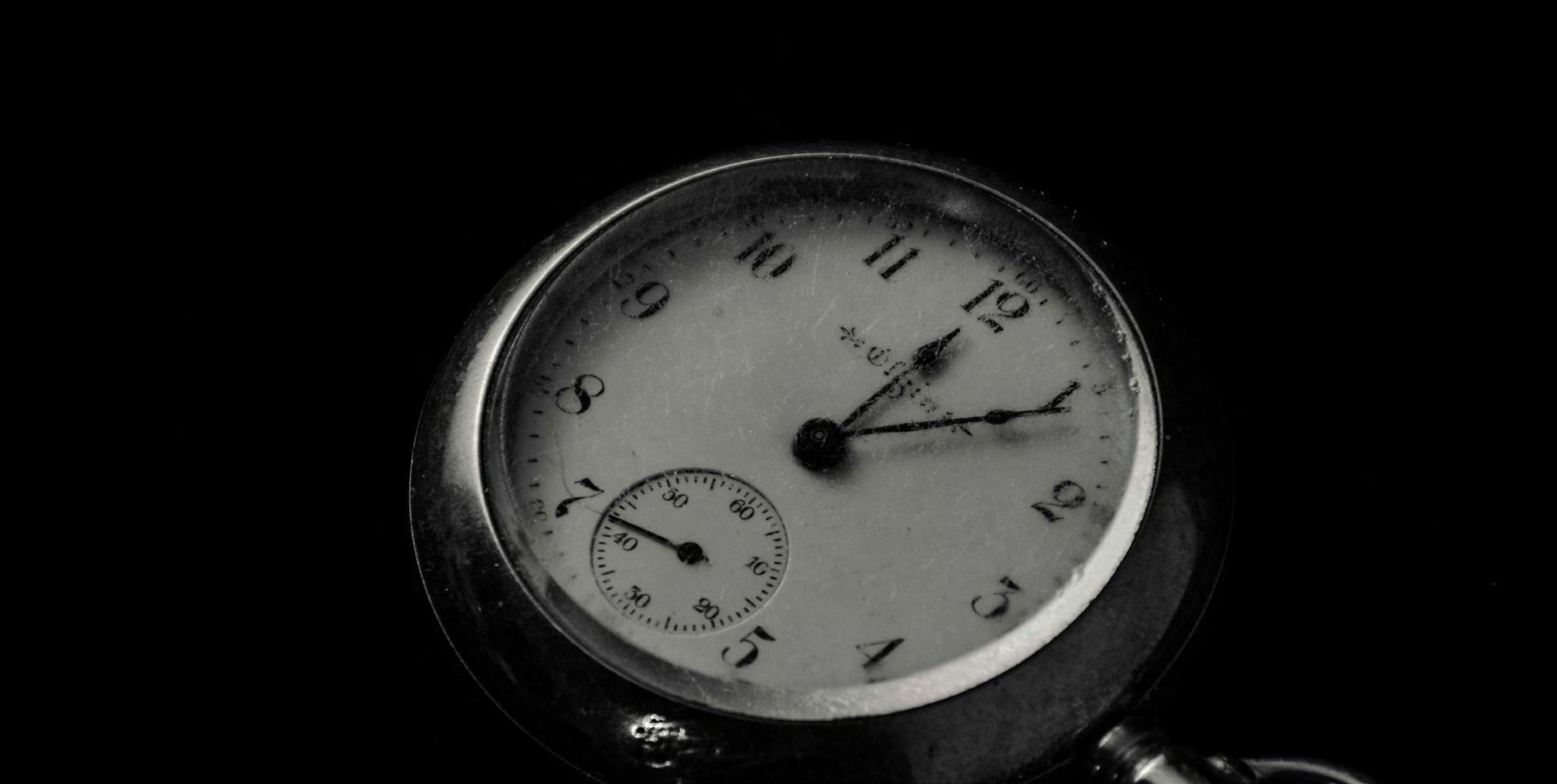
The Five Minute Decluttering Method
The 5 Minute Decluttering Method is a simple yet effective approach to maintaining organization in your home and life. Developed by Lela Burris, this method emphasizes short, focused bursts of decluttering that can be easily integrated into daily routines.
SET A TIMER
Choose a time during your day when you can dedicate just five minutes to decluttering. Use a timer to create a sense of urgency.
FOCUS ON SMALL AREAS
During these five minutes, concentrate on a specific, small area—this could be a drawer, a countertop, or even your phone’s photo gallery. The goal is not to undertake a full cleaning session but to tidy up and remove items that don’t belong.
STAY COMMITTED
Avoid distractions during this time. If you finish early and feel motivated, you can continue for longer, but the key is to commit to just five minutes initially.
Benefits
MANAGEABLE TIME COMMITMENT
The method is designed to fit into busy schedules, making it less daunting than traditional decluttering sessions that can take hours.
CUMULATIVE IMPACT
Over the course of a month, dedicating five minutes daily adds up to over two hours of decluttering, significantly reducing clutter without overwhelming effort.
HABIT FORMATION
Regular practice helps develop a habit of tidiness, making it easier to maintain an organized space over time.
By integrating this method into your daily routine, you can effectively manage clutter and create a more organized living environment without feeling overwhelmed.
The Minimalist Game of Decluttering
The Minimalist Game is a structured decluttering method designed to simplify the process of reducing possessions while making it engaging and fun. Developed by Ryan Nicodemus and Joshua Fields Millburn, known as “The Minimalists,” this game encourages participants to remove items from their homes in a systematic way over the course of 30 days.
The challenge begins on the first day of the month, where you declutter one item. Each subsequent day increases the number of items to declutter by one. For example, on day two, you remove two items, and by day 30, you will need to part with 30 items. By the end of the month, if followed correctly, participants can declutter a total of 465 items.
Benefits
GRADUAL APPROACH
This method eases participants into decluttering, starting with manageable numbers that gradually increase. This helps build confidence and decision-making skills regarding what to keep or discard.
COMMUNITY ENGAGEMENT
The game can be played alone or with friends and family, adding a social element that can enhance motivation and enjoyment.
MENTAL CLARITY
Reducing physical clutter can lead to improved mental clarity and reduced stress, as fewer possessions often contribute to a more peaceful living environment.
Overall, the Minimalist Game transforms decluttering from a daunting task into an enjoyable challenge, promoting a simpler and more mindful lifestyle.


F-A-S-T Method for Decluttering
Peter Walsh, a renowned organizing expert, has developed a practical approach to decluttering that focuses on actionable steps. His F-A-S-T method is particularly effective for managing clutter in your home.
FIND TIME
Schedule a decluttering session. Don’t wait for the perfect moment; instead, set aside specific time blocks to tackle your clutter. This proactive approach is essential for making progress.
ASSESS USAGE
Get rid of items not used in a year. Quickly evaluate your belongings and discard or donate anything that hasn’t been used in the past 12 months. This helps clear out unnecessary items and makes space for what truly matters
RELOCATE ITEMS
Put things back in their proper places. This step involves returning items to their designated locations, which can significantly reduce clutter and improve organization. It’s a simple yet effective way to maintain order in your space.
TRASH
Dispose of garbage immediately. Identify and throw away anything that is broken, soiled, or no longer useful. This helps prevent clutter from accumulating and keeps your environment tidy.
IDENTIFY TREASURES FIRST
Focus on items of sentimental value before dealing with less important belongings. This can help you gain perspective on what is truly significant in your life.
FINISH WHAT YOU START
Develop the habit of completing tasks fully to avoid creating more clutter in the future. For example, after eating, immediately clean up the dishes instead of leaving them for later.
By following these steps and incorporating these additional strategies into your routine, you can effectively declutter your home and create a more organized living space.
The Becker Method for Decluttering
The Becker Method is based on the idea that owning less can lead to a more fulfilling life. It focuses on aligning your physical space with your life goals and values, rather than just tidying up.
SET CLEAR GOALS
Begin by defining your purpose for decluttering. Complete the sentence: “I desire to own less so that I can...” This helps establish motivation and direction.
INCLUDE FAMILY
Involve your family members in the decluttering process as much as possible. This ensures everyone is on board and understands the benefits.
START WITH EASY SPACES
Begin with high-traffic, frequently used areas like the living room or bedroom. This allows you to see immediate benefits and build momentum.
USE THE THREE-PILE SYSTEM
As you declutter, sort items into three categories:
• Relocate (move to another room)
• Keep (in the current room)
• Remove (donate, sell, or discard)
REVISIT AND REVISE GOALS
As you progress, reassess your initial goals. You may discover new motivations or aspirations as you declutter.
Key Strategies
HANDLE EVERY ITEM
Physically touch each item and ask, “Do I need this?” This approach is more practical than Marie Kondo’s “Does it spark joy?” question.
VISUALIZE IDEAL SPACES
Picture how you want each room to function and declutter accordingly.
BE RUTHLESS
Becker encourages being bold in removing items. For example, he suggests ditching half of your knick-knacks if you have too many.
FOCUS ON THE WHOLE HOME
Consider the overall impact of decluttering on your entire living space, not just individual rooms.
Benefits
• Save time and money.
• Create more peaceful and functional living spaces.
• Pursue more meaningful life goals.
• Potentially downsize to a smaller property if desired. By following this method, individuals can transform their homes and, by extension, their lives, focusing on what truly matters rather than accumulating possessions.
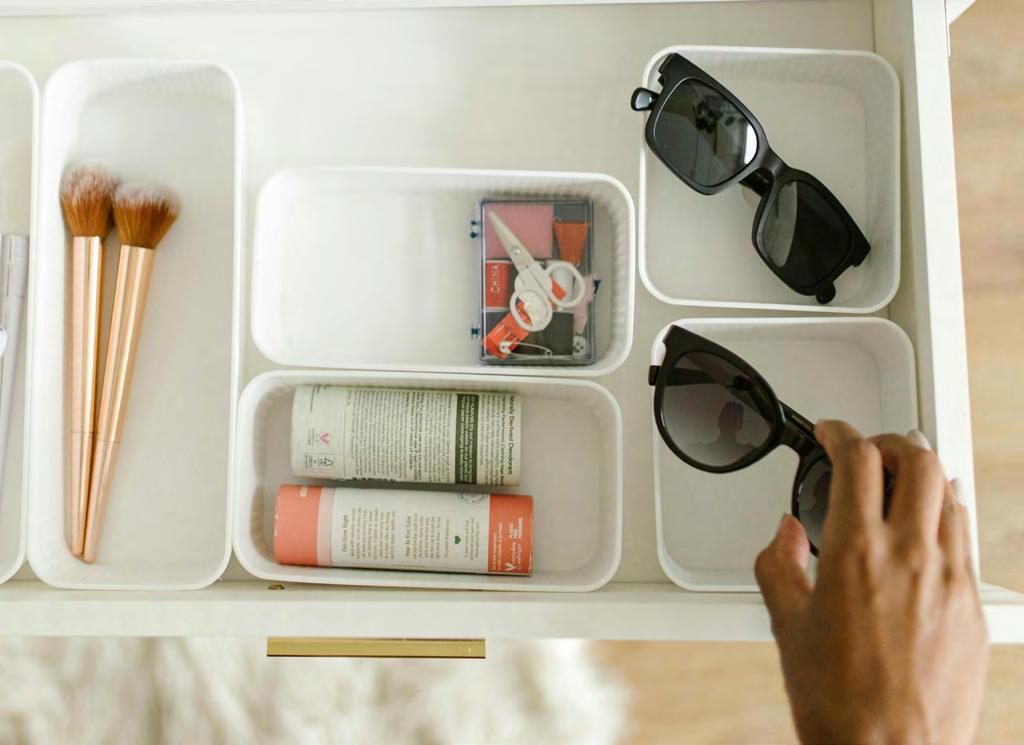

Eco-Friendly Decluttering Practices
Eco-friendly decluttering practices focus on minimizing waste and environmental impact while organizing your space. When decluttering, sort items into categories: keep, donate, recycle, and discard.
Prioritize donating usable items to local charities or shelters, and properly recycle electronics and other recyclable materials.
Consider repurposing or upcycling items before discarding them, such as turning old clothing into cleaning rags.
To maintain an eco-friendly home, adopt sustainable habits like reducing paper use, choosing products with minimal packaging, and making your own cleaning products.
When purchasing new organizational items, opt for sustainable materials like bamboo or recycled plastics.
Finally, be mindful of future purchases to prevent clutter accumulation, following the “reduce, reuse, recycle” mantra and adding a fourth R: “rethink”
This method encourages individuals to tackle decluttering in manageable segments, making it less overwhelming and more achievable. It promotes mindfulness regarding possessions, helping people assess what they truly value and need in their lives.
The simplicity of the 12-12-12 rule makes it adaptable for various spaces and personal circumstances. If the standard of 36 items feels daunting, individuals can adjust the numbers to suit their comfort levels, starting with fewer items if necessary.

Sustainable Donation Options
When decluttering, sustainable donation options can help extend the life of your items while benefiting others and reducing waste. Local charities, thrift stores, and shelters often accept gently used clothing, furniture, and household goods.
For specialized items, consider donating to specific organizations:
• Eyeglasses can be given to optometrists or organizations like Lions Clubs International.
• Professional attire can be donated to programs like Dress for Successz
• Electronics in working condition can be donated to schools or community centres.
• Books can be given to libraries or used bookstores.
By choosing sustainable donation options, you can declutter your space while making a positive impact on your community and the environment.
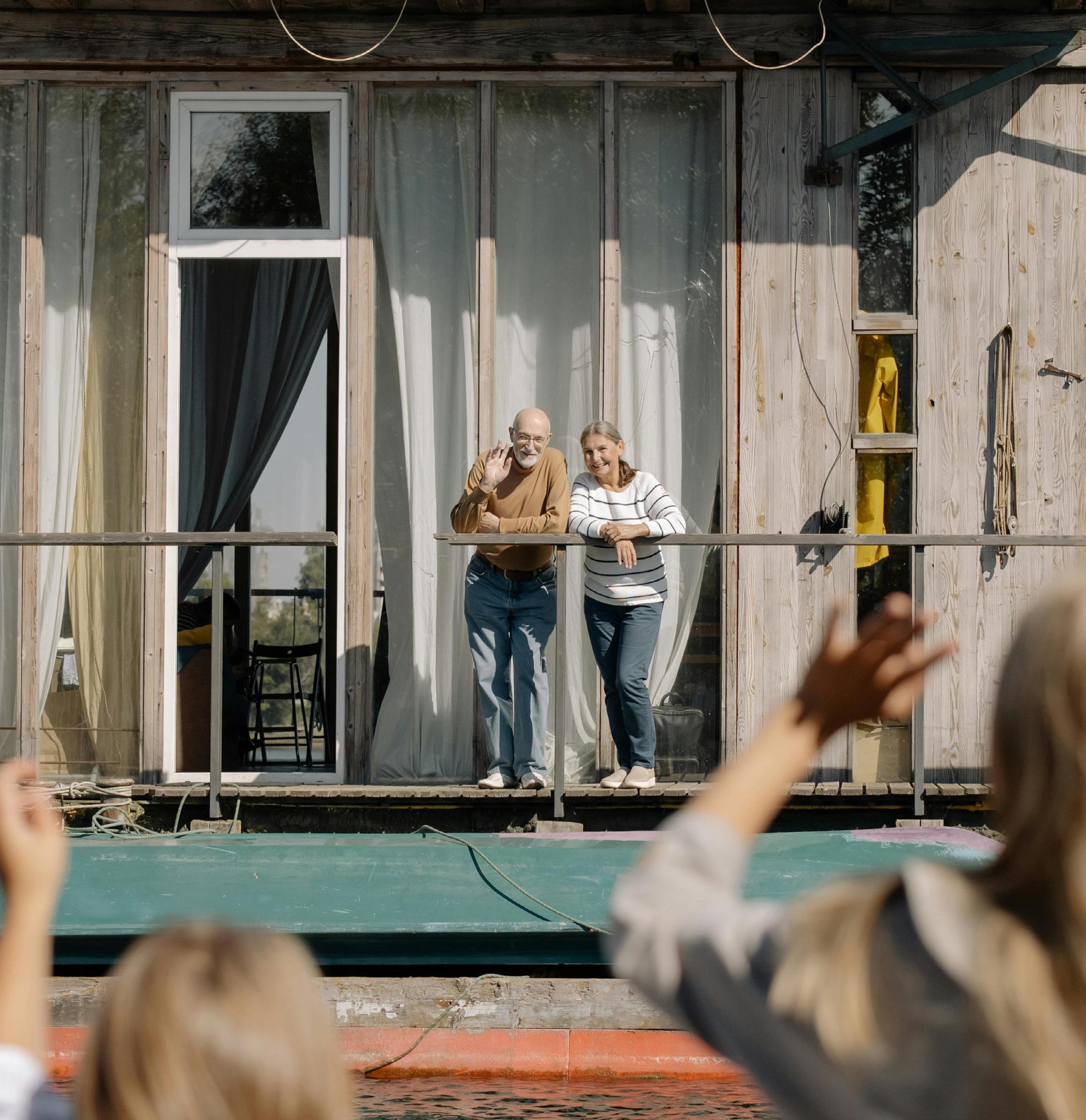
Embracing Life
When the Kids Move Out


Empty Nest: A New Chapter
Remember the day you brought them home? The tiny fingers, their cute toes, the sleepless nights, their first steps, the endless “why?” questions. Each phase seemed like it would last forever. Yet here you are.
If you’re reading this magazine, chances are you’re experiencing one of life’s biggest transitions – your children have left home. Whether they’ve gone off to college, moved for work, or started their own families, this change can feel overwhelming. You’re not alone. We’ve created this guide to help you navigate this new chapter with grace, hope, and maybe even excitement.



When the House Gets Quieter
Remember when you couldn’t wait for a moment of peace and quiet? Now that it’s here, it might feel a little too quiet. That’s perfectly normal. There’s a particular kind of quiet that descends when our children leave. It’s not just the absence of footsteps on the stairs or doors slamming in teenage angst – it’s the silence of a chapter ending. When our kids leave home, many of us feel like we’ve lost our sense of purpose. After all, being a parent has been your main job for years!
“The hardest part wasn’t the day she left. It was the next morning, when I realized, I didn’t need to make her favorite breakfast anymore.” - Sarah, 54

The First Week Survival Guide
• Allow yourself to feel everything
• Keep their room door closed (or open) – whatever feels right
• Text them, but maybe not every hour
• Plan something special for yourself each day
From Maria’s Heart: “I spent the first three days reorganizing the pantry, trying not to think about how I wouldn’t need to stock his favorite cereal anymore. On day four, I sat in his room and cried. On day five, I bought myself art supplies. Today, six months later, that room is my studio, and while I miss him terribly, I’ve discovered parts of myself I’d forgotten existed.”
Many Parents Experience
• A strange emptiness when passing by their child’s room
• Feeling lost during times you used to spend on parenting duties
• Missing the daily chaos and even the mess
• Wondering “what now?”
Real Talk: Jane, 52, shares, “The first few weeks after my youngest left for college, I’d wake up and automatically start making his breakfast. It took time to adjust to cooking for two again.”
Mark, 55: “I kept walking into my daughter’s room to tell her something funny, only to find it empty. Now we have a daily text thread for sharing jokes
These feelings aren’t signs of weakness – they’re signs that you’re human and that you’ve loved being a parent. It’s okay to feel this way, and it’s okay to take time to adjust.



Staying Connected
Just because they’ve moved out doesn’t mean you can’t stay close. Today’s technology makes it easier than ever:
• Schedule regular video calls
• Plan regular visits or family weekends
Finding Your New Normal
“I was tired of rattling around the house alone, so I started a ‘Empty Nesters Supper Club.’ We meet monthly, and everyone brings a dish. We’ve grown to 15 members!” - Margaret, 54
“I turned his basketball practice times into my pottery class. Now Tuesday nights make me smile again.”James, 58
“The first month, I kept cooking for four. Now I’m taking gourmet cooking classes and learning to make meals just for two.” - Linda, 51
Relationship Renaissance
Remember that person you fell in love with? The one you used to stay up all night talking to? They’re still there, waiting to rediscover you too.

“We had to learn to look at each other again, not just at our phones checking the kids’ locations.” - David & Michelle, married 28 years
Creative Date Night Ideas: Couple Stories
1. Mystery Date Night: Take turns planning surprise evenings
2. Learning Dates: Take cooking classes, dance lessons, or wine tasting courses together
3. Memory Lane Dates: Visit places from your early relationship
4. Adventure Dates: Try something neither of you has done before
5. Stay-in Theme Nights: Pick a country and cook its cuisine while watching a movie from that culture
“We started ‘Around the World Wednesdays’ where we cook dishes from different countries. Last week was Thailand - it was a disaster, but we laughed more than we had in months!” - Maria & James, married 27 years
“Every morning, we do a crossword puzzle together over coffee. It’s simple, but it’s become our favorite part of the day.” - David & Susan, married 31 years


Looking Forward
This isn’t just an ending – it’s a beginning
Remember
• You’ll always be a parent
• Your kids still need you, just differently
• This is your time to grow too
• The best chapters of your life may still be ahead
Your role as a parent isn’t over; it’s evolving into something new and potentially even more rewarding. You’ve done the hard work of raising independent adults. Now it’s time to focus on your next adventure.
Empty Nesters’ Words of Wisdom
“The silence is temporary. Soon you’ll find your own voice again.” - Richard, 58
“Think of it as trading quantity time for quality time with your kids.” - Nancy, 55
“It’s not about filling the emptiness; it’s about discovering what else you’re full of.” - Alice, 62
“Your kids taking flight means you did your job well. Now it’s time to spread your own wings.” - John, 57





Yaletown
Kerrisdale
